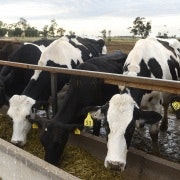Behind Greenspan's asset bubble
As he did in a recent paper he wrote for the Brookings Institution, Greenspan told a US Financial Crisis Inquiry Commission hearing on Wednesday that the causes were international. His starting point is the fall of the Berlin wall and the spread of market capitalism throughout the developing economies.
In effect, he subscribes to the global savings imbalances theory under which excess savings in Asia boosted consumption and lowered interest rates and risk premia in the developed economies.
It was not the Fed and other central banks keeping short term rates low – the Fed Funds rate was below 2 per cent from December 2001 to December 2005 before it started belatedly but steadily rising through 2005 – that caused the crisis but the impact of the imbalances on long-term rates.
To a degree he is right. The crisis wasn't created by any single factor and savings imbalances, financial engineering, the interaction of flawed incentives with greed, poor regulation and regulators and opaque markets all played a role in swelling a series of inter-connected asset price bubbles and amplifying the consequences when they burst.
Behind most asset bubbles – and in this instance, while the crisis might initially have flared up in the US sub-prime housing market it quickly became evident that there bubbles and excesses throughout the financial system and global economy – is loose monetary policy.
When the "Greenspan put" – the knowledge that in a crisis the Fed would always slash rates and open the liquidity spigots – became part of the language of markets in the middle part of the decade it should have been obvious that keeping official rates so low for so long would encourage miss-pricing of risk and excess. As it did.
US official rates remain at negligible levels but that could be justified by the continuing weakness in the US economy, which is operating way below its capacity. That isn't necessarily the case elsewhere.
HSBC's global research team have produced an interesting piece of research based on using the "Taylor rule" to assess whether the monetary policy settings in Asia are appropriate.
John Taylor is a Stanford economist who developed a formula for assessing the conduct of monetary policy in the 1990s which provides a guide as to where short term rates should be to avoid booms and busts in the economy.
The HSBC economists applied the Taylor rule to Asian economies (ex Japan) and concluded that the region is "heading straight into an asset bubble." They did also say, however, that the bubble would grow for a quite a while longer. And that if Asian central banks didn't do more now they risked repeating the policy mistakes of the Fed.
What their analysis shows is that across the region after the gap between the average of policy rates across Asia and HSBC's estimate of a regional Taylor rule number closed last year it is opening rapidly again, with rates roughly 200 basis points lower than the rule would dictate.
South Korea, Hong Kong and India seem to be experiencing the greatest divergence from where the rule says official rates ought to be, but in China, Taiwan, Thailand and Singapore the official rates are also starting to fall behind the level the rule would suggest.
The gap is narrow and, thanks to the succession of Reserve Bank rate rises, closing in Australia. Only Vietnam and Indonesia have settings consistent with the rule.
The HSBC analysts noted that South Korea had tightened policy very aggressively – by more than the Taylor rule would suggest – before the financial crisis hit to avert a housing bubble. It was effective.
They also note that while the application of the rule to China suggests that rates need to rise, the Chinese are focused on the supply of credit rather than its price. Unlike most economies, the Chinese authorities can direct their banks to stop lending, and do.
Whether monetary policy played a primary or contributory role in the financial crisis, there is little doubt that it played a role. It is apparent from the RBA's actions, before, during and after the crisis, that it believes monetary policy plays a major role in influencing economic activity and behaviour.
Unlike the US experience, for most of the period from early 2003 to the middle of the crisis the RBA, which has been lauded for its conduct of monetary policy, set rates that were actually above the level implied by the Taylor formula.
Taylor's rule was developed to help central banks determine when and by how much they should lean into incipient bubbles. In large parts of Asia, it would seem, that time is fast approaching.
Greenspan may (understandably) want to downplay the role of monetary policy in fomenting the excesses that led to the crisis. He is quite critical of Taylor and his rule and dismissive of its usefulness as a guide for central banks.
Other central bankers, given recent experiences and the reality that the crisis developed and exploded on the Fed's home turf, might not want to risk being on the wrong side of that argument.
















